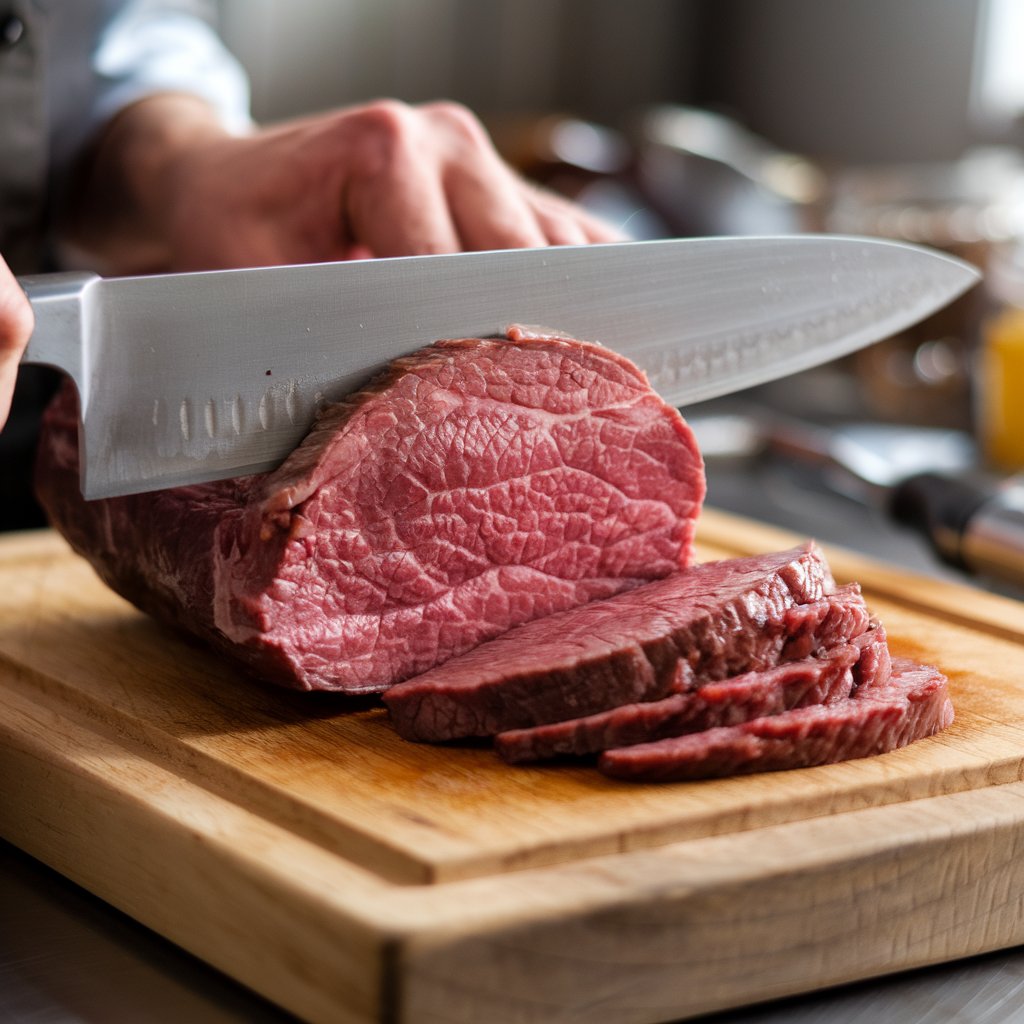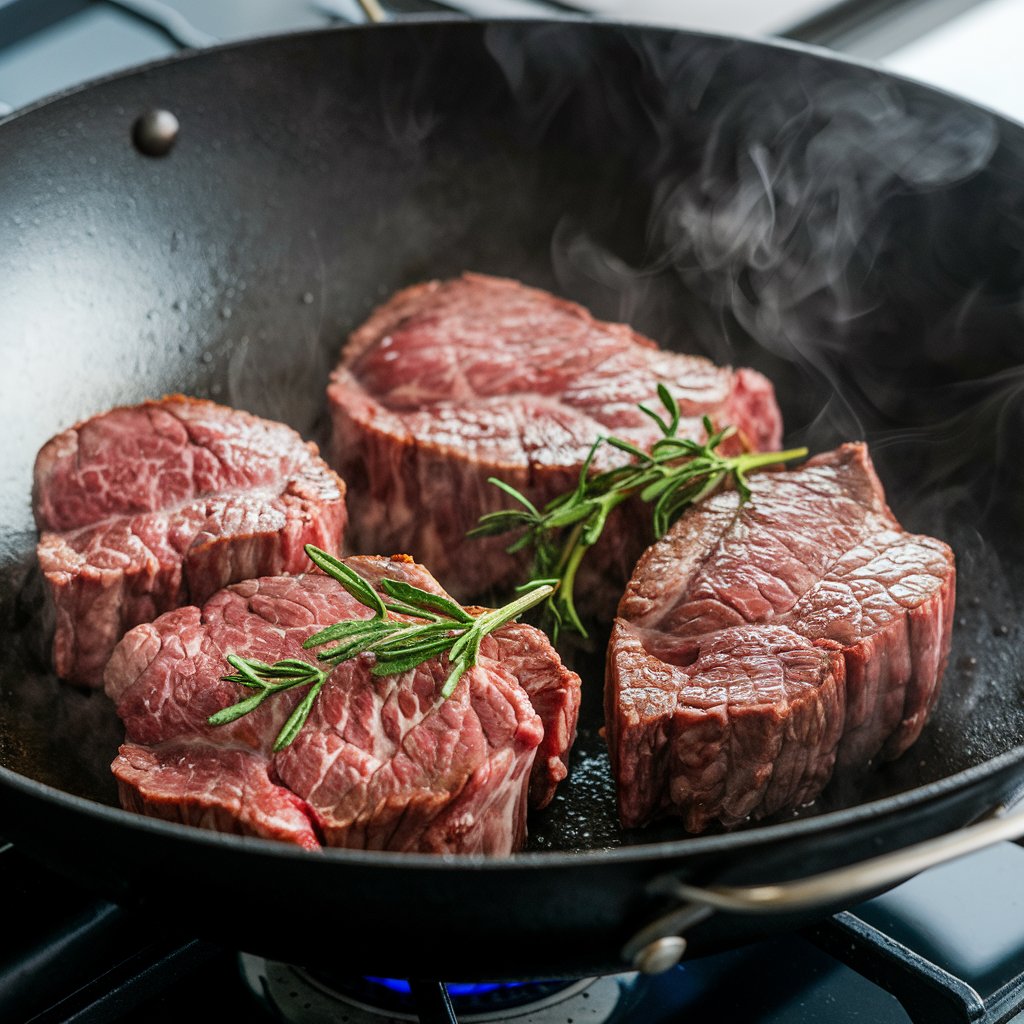Table of contents
- Introduction
- Secrets Behind the Tenderness of Chinese Pepper Steak
- The Science of Tenderness: Marination Techniques
- Cooking Tips for Perfect Pepper Steak
- Common Mistakes to Avoid
- FAQs About Tenderness in Chinese Pepper Steak
- 1. How long should you marinate beef for pepper steak?
- 2. What beef cuts work best for Chinese pepper steak?
- 3. Can velveting be used for other proteins like chicken?
- 4. Why is cornstarch critical in the marinade?
- 5. How does slicing beef against the grain make it tender?
- 6. Can I prepare pepper steak in advance?
- Conclusion
Introduction
Looking for the perfect pepper beef recipe? This classic dish combines tender beef, vibrant bell peppers, and a savory sauce for a quick and flavorful stir-fry. With easy preparation and bold ingredients, this recipe is ideal for weeknight dinners or special occasions. Let’s dive into the steps to create this delicious meal at home!
This article dives into the traditional techniques, ingredient choices, and science behind achieving perfectly tender beef in Chinese pepper steak. From selecting the right cut of beef to mastering marination methods like velveting, we’ll explore all the essential steps. Let’s uncover the secrets that bring this classic dish to life.
Secrets Behind the Tenderness of Chinese Pepper Steak
The Role of Traditional Cooking Techniques
– Stir-Frying at High Heat for Quick Cooking
Chinese cooking emphasizes high heat for stir-frying, which quickly sears the beef, locking in its natural juices. This method prevents overcooking and keeps the beef tender and moist.
– Flash Cooking to Seal Juices
Flash cooking involves brief, intense cooking over high heat. The beef is cooked in small batches to ensure that each piece sears evenly without steaming, maintaining its texture and flavor.
Importance of Proper Beef Preparation

– Selecting the Right Cut of Beef
The cut of beef is a critical factor in tenderness. Traditional recipes often use cuts like flank steak, sirloin, or ribeye because they offer a balance of tenderness and flavor.
Pro Tip: Look for beef with a bit of marbling to ensure it stays juicy during cooking.
– Slicing Beef Against the Grain
Cutting the beef against the grain shortens the muscle fibers, resulting in tender bites. To identify the grain, observe the lines running through the meat, and slice perpendicular to them.
Pro Tip: Chilling the beef in the freezer for 15 minutes before slicing makes it easier to cut thin, even slices.
The Science of Tenderness: Marination Techniques
Marination is one of the most important steps in achieving tender Chinese pepper steak. The process not only adds flavor but also chemically alters the meat, breaking down proteins to create a soft, juicy texture.
Common Ingredients in Chinese Marinades
– Soy Sauce: Adding Saltiness and Umami
Soy sauce is a staple ingredient in Chinese marinades. It penetrates the beef, adding saltiness and a rich umami flavor while tenderizing the meat through its enzymatic properties.
– Cornstarch: Locking in Moisture
Cornstarch forms a thin coating on the beef, sealing in moisture and protecting it during cooking. This ensures the meat stays juicy and tender, even under high heat.
– Baking Soda: Softening the Protein Structure
A small amount of baking soda can be added to the marinade to alkalize the meat’s surface. This process softens the protein fibers, making the beef noticeably more tender. However, it’s essential to use it sparingly to avoid over-softening.
Step-by-Step Velveting Process

– What Is Velveting?
Velveting is a traditional Chinese cooking technique used to tenderize meat. It involves marinating beef with a mixture of cornstarch, soy sauce, and sometimes baking soda, followed by briefly blanching or stir-frying it before the final cooking stage.
– How Velveting Creates Soft, Juicy Beef
The cornstarch in the marinade forms a protective barrier, preventing the beef from losing moisture. This, combined with the quick cooking methods, ensures that the beef remains soft and juicy.
Step-by-Step Velveting Instructions:
- Slice the beef thinly against the grain.
- In a bowl, combine soy sauce, cornstarch, and optional baking soda.
- Mix the beef with the marinade until evenly coated. Let it rest for 20–30 minutes.
- Heat a small amount of oil in a wok and briefly stir-fry or blanch the beef until it’s partially cooked. Set it aside for the final stir-frying step.
Cooking Tips for Perfect Pepper Steak
Cooking techniques play a crucial role in maintaining the tenderness achieved through preparation and marination. By following these tips, you can ensure your Chinese pepper steak turns out perfectly every time.
Timing and Temperature
– Why High Heat is Essential
Stir-frying at high heat ensures that the beef cooks quickly, sealing in its juices without overcooking. High heat also helps caramelize the meat’s surface, enhancing the dish’s flavor.
Pro Tip: Use a wok or a skillet with a heavy bottom to distribute heat evenly and prevent the beef from sticking.
Avoiding Overcooking for Best Results

Beef cooks quickly, especially when cut thinly. Overcooking can make it tough and chewy, undoing all the tenderizing efforts. Sear the beef just until it’s browned on the outside, then remove it from the wok to finish cooking later with the vegetables and sauce.
Balancing Flavors with Tenderness
– Using Marinade Residue to Enhance the Sauce
The leftover marinade can be incorporated into the sauce for added flavor. However, ensure it’s heated thoroughly to cook out any raw meat juices.
– Adding Aromatics Without Compromising Texture
Garlic, ginger, and green onions add depth to the dish but should be cooked briefly to retain their freshness without overwhelming the dish. Add them after the beef is partially cooked to infuse the wok with their aroma without altering the meat’s texture.
Additional Pro Tips:
- Always cook beef in small batches to avoid overcrowding the wok, which can cause steaming instead of searing.
- Keep your ingredients prepped and ready to ensure a quick cooking process that preserves the beef’s tenderness.
Up next, we’ll look at common mistakes to avoid when cooking Chinese pepper steak to help you perfect this classic dish.
Common Mistakes to Avoid
Even with the right preparation, a few common mistakes can impact the tenderness and overall quality of your Chinese pepper steak. Here’s what to watch out for to ensure your dish turns out perfectly every time.
1. Overcooking the Beef
Overcooking is the most common mistake, making the beef tough and chewy.
- Stir-fry the beef quickly over high heat to ensure it cooks evenly without drying out.
- Remove the beef from the wok once it’s seared and return it during the final cooking stages.
Pro Tip: Cook the beef in batches to avoid overcrowding the pan, which can lower the temperature and result in steaming instead of searing.
2. Choosing Tough Cuts of Meat
Not all beef cuts are suitable for stir-frying. Using tougher cuts like chuck or brisket can make the dish less enjoyable.
- Opt for tender cuts such as flank steak, sirloin, or ribeye for the best results.
- Always slice the beef thinly against the grain to shorten the muscle fibers and enhance tenderness.
3. Skipping the Velveting Process
Velveting is key to achieving the tender texture characteristic of Chinese pepper steak. Skipping this step can result in beef that is less juicy and flavorful.
- Always marinate the beef with soy sauce, cornstarch, and other tenderizing ingredients before cooking.
- The velveting process also helps the sauce adhere better to the meat, enhancing the dish’s overall taste.
4. Cooking at Low Heat
Low heat prevents proper searing, leaving the beef with a bland, rubbery texture.
- Ensure the wok or skillet is hot enough before adding the beef. The oil should shimmer or lightly smoke to indicate the right temperature.
- High heat creates the caramelization needed for maximum flavor.
5. Not Preparing Ingredients in Advance
Stir-frying is a fast process, and delays can lead to overcooked or unevenly cooked components.
- Chop, measure, and prepare all your ingredients before you start cooking.
- Keep everything within reach to maintain the high heat required for stir-frying.
By avoiding these mistakes, you’ll consistently achieve tender and flavorful results in your Chinese pepper steak. Next, we’ll address frequently asked questions to provide even more insights into perfecting this dish.
FAQs About Tenderness in Chinese Pepper Steak
Here are some frequently asked questions about the tenderness of Chinese pepper steak, along with answers to help you achieve the best results.
1. How long should you marinate beef for pepper steak?
Marinating beef for at least 20–30 minutes is sufficient to tenderize it and enhance its flavor. For even better results, marinate it for up to 2 hours in the refrigerator. If using baking soda in the marinade, keep the marination time under 30 minutes to avoid over-softening the meat.
2. What beef cuts work best for Chinese pepper steak?
Tender cuts like flank steak, sirloin, and ribeye are ideal for Chinese pepper steak. These cuts strike a balance between flavor and texture, making them perfect for quick stir-frying. Avoid tougher cuts like chuck or brisket, which require longer cooking times to become tender.
3. Can velveting be used for other proteins like chicken?
Yes, velveting is a versatile technique that works well with chicken, shrimp, and even pork. For chicken, use a marinade with soy sauce, cornstarch, and a touch of oil. For shrimp, you can skip baking soda but still coat it lightly in cornstarch and soy sauce for a silky texture.
4. Why is cornstarch critical in the marinade?
Cornstarch is crucial because it locks in moisture, creating a protective barrier around the meat. During cooking, it also thickens the sauce, helping it cling to the beef and vegetables. This dual purpose makes cornstarch a key ingredient in achieving the perfect texture and flavor.
5. How does slicing beef against the grain make it tender?
Cutting beef against the grain shortens the muscle fibers, making each bite easier to chew. This technique ensures that even tougher cuts of meat can achieve a tender texture when cooked.
6. Can I prepare pepper steak in advance?
Yes, you can prepare the components in advance. Slice and marinate the beef up to a day ahead and store it in the refrigerator. Chop the vegetables and mix the sauce ingredients beforehand. When ready to cook, simply stir-fry everything quickly for a fresh and flavorful dish.
By addressing these FAQs, you’ll have a deeper understanding of the techniques and ingredients needed to make Chinese pepper steak tender and delicious.
Conclusion
The tenderness of Chinese pepper steak is one of the key factors that makes this dish so irresistible. By understanding the role of preparation, marination, and proper cooking techniques, you can replicate the melt-in-your-mouth texture that sets this dish apart.
From selecting the right cut of beef and slicing it against the grain to mastering the velveting process, each step contributes to achieving perfectly tender results. High-heat stir-frying, balanced seasoning, and avoiding common mistakes ensure that your pepper steak is as flavorful and juicy as it is tender.
This guide has provided you with the tools to recreate restaurant-quality Chinese pepper steak in your own kitchen. Now it’s time to put these techniques to the test! Experiment with different marinades, cuts of meat, or even other proteins like chicken and shrimp to make the dish uniquely your own.
Enjoy the satisfaction of crafting a tender and delicious pepper steak that’s sure to impress every time. Happy cooking!

